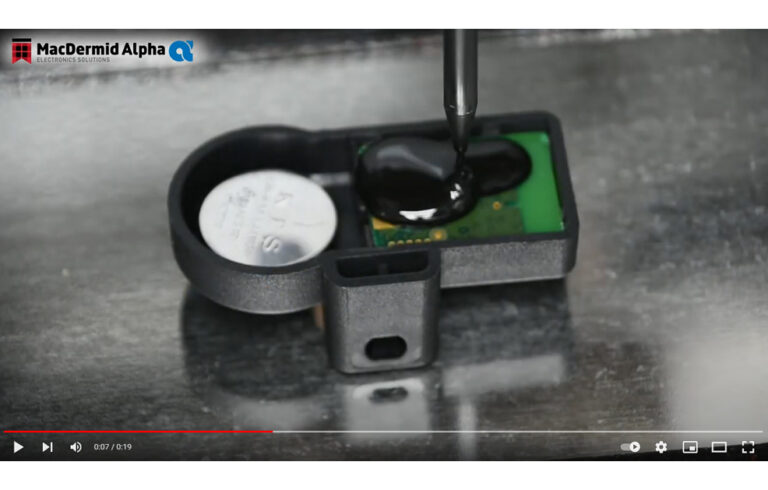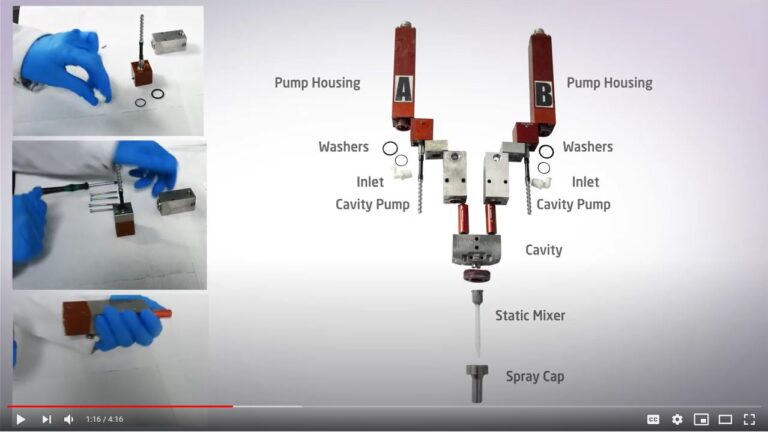During use, some electronic components can generate significant amounts of heat. Failure to effectively dissipate this heat away from the component and the device can lead to reliability concerns and reduced operational lifetimes.
Electronic components and devices will produce varying levels of heat during their operation. Where significant amounts of heat are generated, intervention in the form of thermal management may be required in order to prolong working life and increase reliability. Thermal management materials are available in a variety of different solutions including Silicone and Non-Silicone pastes, phase change materials, Silicone and Non-Silicone gap pads, gap filling materials, RTVs and bonding products plus encapsulation resins.
If we consider a heat producing electronic component in isolation then, during operation, its temperature will rise until the heat produced within the device becomes equal to the heat lost to the surroundings and the device has reached equilibrium. The rate of loss of heat from a hot object is governed approximately by Newton’s Law of Cooling; this states that the rate of loss of heat is proportional to the temperature difference between the body and the surroundings. As the temperature of the component rises the heat loss increases. When the heat loss per second equates to the heat produced per second within the component, the device will have achieved its equilibrium temperature. This temperature may be high enough to significantly shorten the life of the component or even cause the device to fail. Thermal management products are the ideal solution for this scenario. A similar approach can be applied to a complete circuit or device which incorporates heat producing individual components.
The rate of loss of heat will be higher in a forced draught than still air and therefore one option to control the temperature of a device or circuit is to incorporate a fan, or indeed fans to increase the air flow. Even ensuring adequate general ventilation will result in a lower operating temperature than if the circuit is in a confined space with no ventilation slots. A frequently overlooked point is that reduced atmospheric density at high altitudes leads to less effective heat transfer to the surroundings and consequent higher device operating temperatures.
Heat is lost from a component to its surroundings at the surface of the component. The rate of loss of heat will increase with the surface area of the component; for instance a small device producing 10 watts will reach a higher temperature than a similar powered device with a larger surface area. One way of limiting the operating temperature will therefore be to artificially increase the surface area. This can be achieved by attaching a metal heat sink to the device. Heat sinks can be made by stamping, extrusion or casting and are generally fabricated from copper or aluminium or their alloys as the heat sink must be a good conductor of heat. Often heat sinks have a finned structure to maximise the available area for heat dissipation to the surroundings. Where heat sinks are being used, they will be much more effective if the entire unit is well ventilated or, even better, forced air flow is applied by use of one or more fans.
It is impossible to make heat sinks or components with perfectly flat mating surfaces, so, when the two come into contact, the high spots contact one another and inevitably, there will be a small air gap between the two over a large part of the surface. Air is a poor conductor of heat and so the interface will provide a thermal barrier which limits the efficiency of heat loss from the device. It is to overcome this effect that heat transfer compounds are used.
Heat transfer compounds are designed to fill the gap between the device and the heat sink, the interface, and thus reduce the thermal resistance at the boundary between the two. This leads to faster heat loss to the heat sink and a lower operating temperature for the device. Modern developments in thermal interface materials (TIMs) have led to the production of phase change products, which offer the best combination of stability during rapid temperature changes and low thermal resistance. Gap pads are also widely used in applications where ease and consistency of application are of importance. However, thermal management pastes are still the most widely used TIM as they are also easy to apply but offer much lower thermal resistances than gap pads. Heat transfer compounds can be of various chemistries including Silicone and Non-Silicone products. Thermally conductive pastes, for example, consist of thermally conductive fillers in a carrier fluid, which can be based on a silicone or non-silicone material. Thermal pastes do not cure and can offer the best solution if rework is required. Silicone products typically offer higher upper temperature limits but silicone containing products may not be authorised for certain applications, where LMW siloxane migration can lead to issues with cleanliness, adhesion and electrical failures.
Curing products are often used as bonding materials; examples include silicone RTVs or epoxy potting compounds – the choice will often depend on the bond strength or operating temperature range required.
With any thermally conductive material it is very important to ensure that the interface between device and heat sink is completely filled and all air is displaced. This is usually done by a applying a quantity of the compound to the centre of the mating surface of the device or the heat sink, and bringing the two together whilst holding them so that the mating surfaces are parallel. It is advisable to control the quantity of the material applied, so that enough is present to ensure that all air is displaced but not so much that a rather messy surplus appears at the edge of the interface. This objective is more readily achieved using automatic dispensing and assembly equipment. Ensuring all air is excluded from the interface leads to a lower thermal resistance and lower device operating temperature. The higher the thermally conductivity of the paste or resin the lower will be the thermal resistance, and hence the lower the operating temperature. The thermally conductive heat transfer compound will have a lower thermal conductivity than the heat sink material, so keeping the thickness of the film at the interface as low as possible will decrease the thermal resistance and again lower the operating temperature. It is important however to ensure that the lower film thickness does not result in air gaps in the film. It is possible to carefully control the thickness of the film by including very small solid glass spheres (ballotini) of controlled diameter into the paste or resin – the gap thickness will then be determined by the diameter of these. It is advisable to ensure good contact between the device and the heat sink by the use of bolts or clips.
It is possible, knowing the thermal conductivity of the heat transfer compound, the thickness of the film of heat sink compound and the contact area of the heat sink, to calculate the thermal resistance across the boundary and hence the equilibrium operating temperature of the device. The power of the device needs to be known and assumptions need to be made about the temperature reached by the heat sink.
With heat generating circuitry it may be adequate to ensure thermal control by potting into a metal box, with or without integral or attached cooling fins, using a thermally conductive potting compound. Once again it is important to ensure that no air inclusions occur during the potting operation as these will interfere with heat transfer to the metal case. Mineral fillers used in some resins systems have a higher thermal conductivity than the resin base, so filled resins are better than unfilled resins as far as thermal control is concerned. The higher the filler level the higher will be the thermal conductivity – higher filler levels will lead to higher viscosity however, and a greater possibility of air inclusions in the potting.
Other very specialist methods of thermal control are the use of liquid cooling and also Peltier effect devices. Normal liquid cooling involves the circulation of a coolant fluid in close proximity to the device: liquids are more effective for heat transfer than air. A refinement of liquid cooling is the use of heat pipes. With heat pipes a coolant fluid is vaporised at the hot component and the vapour then flows to a cold area where it is condensed. The latent heat of evaporation of the fluid gives very effective component cooling. This principle is used very effectively in refrigerators. The Peltier effect is observed when a direct current is passed through the junction of two dissimilar metals – if current flows in one direction the junction heats up, but with flow in the reverse direction it cools down. Semiconductors have now been found which show this effect and an array of these can be used for cooling. All of these cooling devices will require the use of thermally conductive materials at the interface with the component being cooled, to exclude thermally insulating air and increase the efficiency of heat transfer to the cooling system. Also the hot end of the cooling device may involve the use of heat sinks to dissipate the heat.
Increasing miniaturisation in electronics means that heat dissipation problems are becoming increasingly important. More effective thermal management will often lead to enhanced reliability and life expectancy of devices.
Dr. John Humphries
Electrolube










